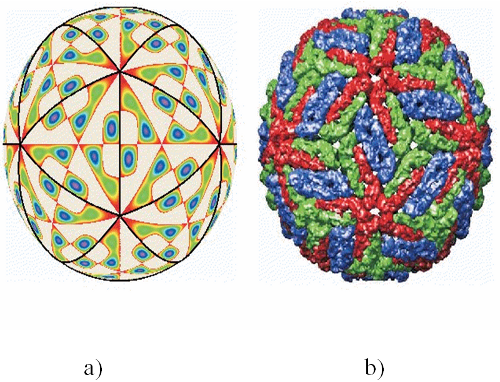Viruses are biological systems with high level of spatial organization well suited to modern physical methods of study. Viral genome is protected by a solid protein shell (capsid) made of many copies of identical subunits (one or few proteins). Recent physical and biochemical data rise a whole number of questions concerning unconventional positional order of subunits in the shell, thermodynamics and physical mechanisms of the self-assembly, shape and mechanical stability of the shell. In the present work we develop the theory which explains and classifies the capsid structures for viruses with spherical topology and icosahedral symmetry. The theory proposed is based on the statistical physics principles and on the symmetry properties of coat proteins. We develop an explicit method which predicts the positions of centers of mass for the proteins constituting viral capsid, including the capsids of unusual viruses discovered quite recently, and discuss the assembly thermodynamics. We show the relation between the protein density distributions obtained and the infectivity properties for several human viruses. To illustrate the notions of the theory and the results obtained we focus on viruses of the Flavivirus family, their herringbone-like structure, infectivity and pH-driven capsid reconstruction during the maturation process in the cellular pathway. Universal characteristics of polymorph mutant viruses and virus-like particles are introduced. To illustrate the peculiarities of virus structures a comparative study of cellular patterns in tissus with spherical topology (non-proliferative epithelia in oocytes) is also presented.
